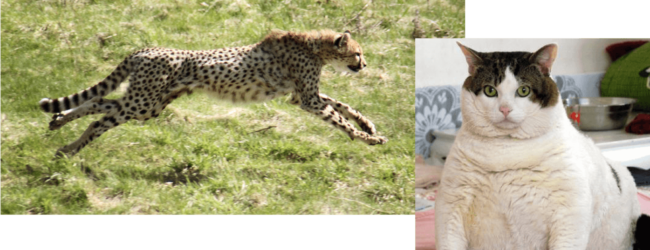
Have you ever seen a wild animal that was overweight?
I don’t mean some poor overfed dog or cat, or some animal in the zoo, but an animal in the wild?
Me neither.
That’s not something that I used to spend much time thinking about, but over the last few years, I’ve spent some time trying to understand how we’ve gotten so unhealthy.
I used to be convinced that I was doing all the right stuff. Never mind the extra 20 pounds I’d gained.
I was following all the experts’ advice.
My doctor, the American Heart Association, the USDA – they all said eat plenty of “heart healthy whole grains”, avoid saturated fats, eat plenty of veggies, and make sure to exercise.
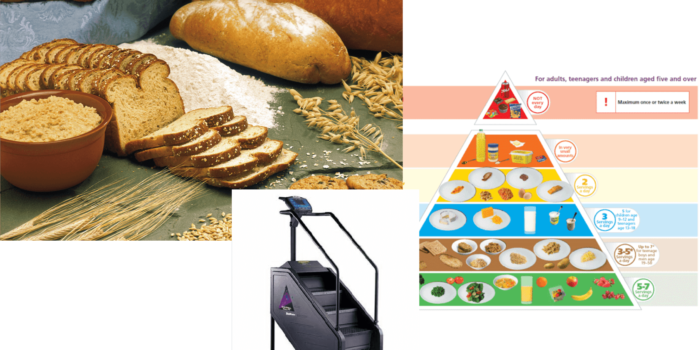
I did all of that. I was like a poster child for heart-healthy whole grains. Whole wheat, quinoa, couscous, brown rice, barley, steel cut oatmeal, all of it.
I went to the gym 3 or 4 times a week – I’d lift weights and then I’d just wear out the Stairmaster or the elliptical.
So, I was floored when I found out that I had heart disease.
How was that happening to me? Mr. Heart healthy whole grains!
Interesting question, but not the type of question that most doctors are going to spend a lot of time worrying about.
And this isn’t a poke at doctors. They’re trained to identify problems and to provide treatment options. And they’ll be the first ones to tell you they don’t spend a lot of time in medical school studying nutrition.
So, the recommendation from my family doctor and my cardiologist was to get on statins.
This is probably as good a time as any to say that I’m not a doctor and that I’m not qualified to treat, prevent or cure a disease.
And the FDA will tell you that only doctors and drugs can cure disease.
I was leaning toward following my doctors’ advice until they told me that statins work by blocking your absorption of cholesterol and something about that just didn’t feel right for me. A good friend of mine had a heart attack after taking Vioxx and he later died of congestive heart failure.
Now I get it that there’s no connection between Vioxx and statins, but what my friend’s death did was made me realize that all of that scary stuff that they say at the end of the drug commercials; those are real side effects that are happening to real people.
I wanted to see if I could find some way to get to the root cause of what was going on instead of treating a symptom.
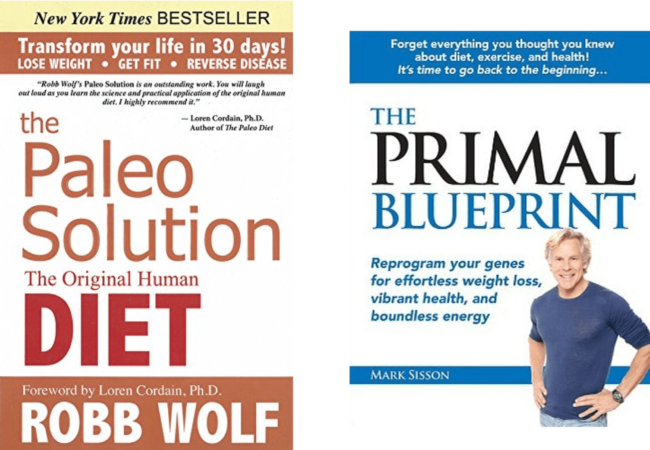
Luckily for me, I got introduced to the work that Robb Wolf and Mark Sisson were doing with the Paleo/ Primal way of eating and moving and the more I read about what they were doing, the more sense it made.
What they were talking about was looking at how we evolved using the lens of anthropology and use that to better inform a modern diet and fitness strategy.
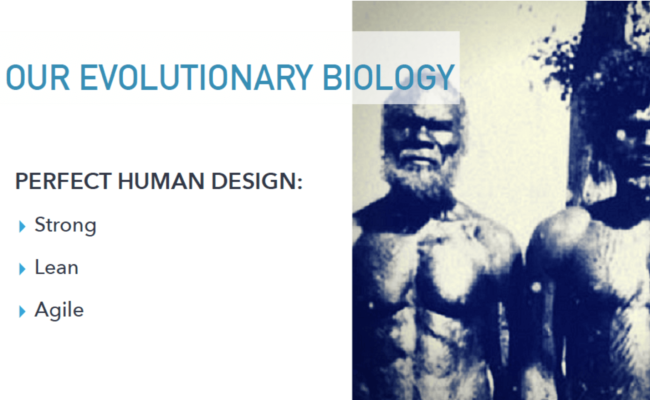
We evolved during the 2 ½ million years of the Paleolithic period.
Agriculture has only been around for about 10-12,000 years – so from an evolutionary standpoint that’s about 10 minutes, and because of that, it’s had a negligible impact on our genome.
Our existence depends on going out and killing and foraging for our food. We ate wild game, eggs, fish and shellfish, wild vegetables, fruit, nuts and seeds, roots and tubers, and honey and probably our fair share of bugs.
Relax – I’m not going to suggest that you start eating bugs.
But we’re not optimized to eat a high carb, low-fat diet. It flies in the face of our factory settings (how we’re wired).
We’re hunter-gatherers living in the 21st century.
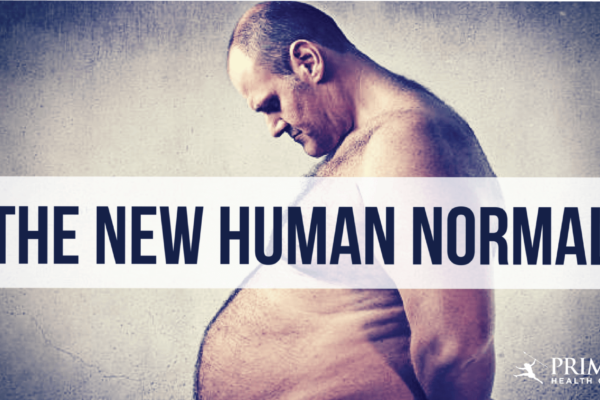
And guess what happens when you take someone that was genetically tuned to survive food shortages and the very real survival pressures of the paleolithic era and drop them into the abundance and relative tranquility of our current environment.
It’s like trying to run a Ferrari on banana pudding.
We have a mismatch between our homo sapiens genes, our current environment, and conventional wisdom.
Let me explain what I mean by that.
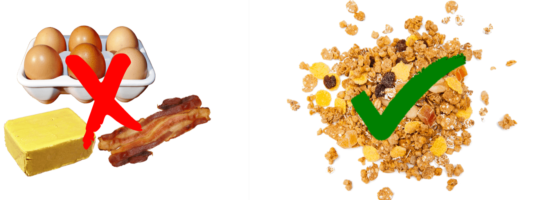
The government declared war on fat back in the 60s.
Butter, lard and that ever-present container of bacon grease that used to sit by the stove were all declared the enemy and margarine, corn and vegetable oil were supposed to be our new best friends.
And carbs. God, we loved us some carbs.
But unfortunately, we fell for the wrong carbs.
Wheat is a carb, rice is a carb, pizza crust is a carb and don’t forget cookies and chips, but so is broccoli.
You can eat broccoli all day long and it’s not going to have a significant impact on your blood sugar or your insulin levels, on the other hand, grains and other starchy carbs increase your blood sugar and your insulin levels.
When was the last time that you had to tell your kids to quit snacking on broccoli because it’s going to spoil their appetite for dinner?
Our bodies can handle the natural, minimally processed fats, we’ve been doing it for millions of years, we can handle protein – we’re natural meat eaters, and we can handle broccoli, that also resembles foods that we ate during the paleolithic era, what we struggle with are the modern grains and the process foods that don’t even remotely resemble what we evolved eating.
But the money is in the processed foods.
How many commercials have you ever seen for broccoli?
How’s the carb and the process food infatuation working out? Go to any public place and look around. How many fit, trim people do you see?
And this isn’t about body shaming. We’re facing a health epidemic in this country and a big part of the problem is that we’ve been giving people the wrong health advice for years.
A perfect example is diabetes.
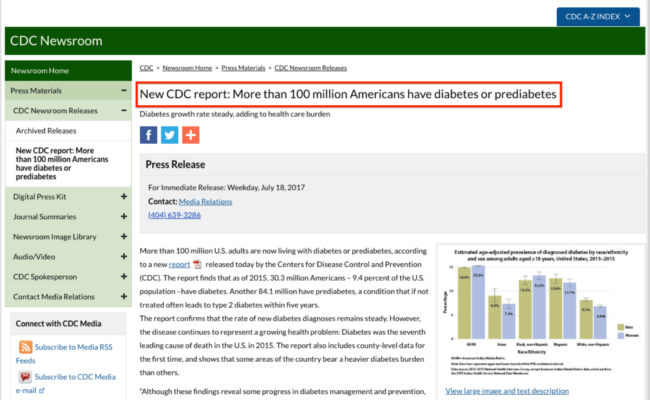
Today the US has 100,000,000 people that are either pre-diabetic or diabetic. So, to say that diabetes is a problem is a staggering understatement.
I saw a great Ted Talk by a Doctor Sara Hallberg.
She has a weight management practice and recently conducted a study with type 2 diabetics.
Before we look at Dr. Hallberg’s study let’s talk for just a minute about what diabetes is. It’s defined as a disease in which the body’s ability to produce or respond to insulin is impaired, resulting in abnormal metabolism of carbohydrates and elevated levels of glucose in the blood and urine.
In other words, carbohydrates are problematic for diabetics.
Dr. Hallberg’s study divided a group of type 2 diabetics in half.
Half of the group was put on a diet that followed the ADA guidelines – that’s the American Diabetics Association and the other half of the group was put on a low carb, moderate protein, high fat ketogenic diet. The duration of the study was 6 months.
At the end of the 6 months, the ADA groups daily insulin requirements had increased by almost 350 units a day. That’s because with the standard treatment diabetes is a progressive disease – it gets worse.
The keto group – their daily insulin requirements had dropped by almost 500 units a day. Their diabetes was actually being reversed! And keep in mind – they weren’t put on some different drug; their treatment strategy was changing what they ate.
I read the comments after the Ted Talk and a number of them came from people that were part of the study and from people that weren’t part of the study but were following the diet and they said that they were off of their diabetes medication and their blood sugar was normal for the first time in years.
So, I went to the ADA site expecting to see all kinds of information about the benefits of a Keto diet.
Nope. They’re still pushing carbs.
That seemed strange since we know that diabetics have a hard time with carbs, but then I remembered one of the comments that I had seen after the Ted Talk – it said to check out who the big donors are for the ADA. So, I looked at the tab that talks about their elite funders – every one of them was a pharmaceutical company.
I’m not going to be that person that freaks out and says that it’s all about the money. Because maybe it’s not. Maybe it’s just a predisposition. An assumption that says that food’s great an all that, but the only way to cure a disease is with a drug. Just ask the FDA. Or better yet, ask Diamond Walnuts.
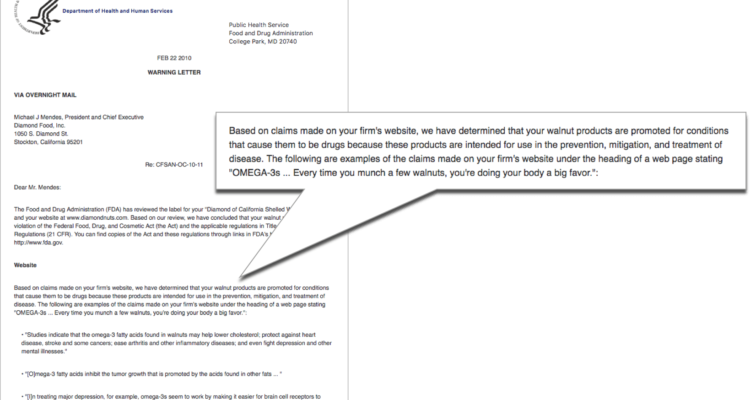
They made the mistake of telling people that walnuts are high in Omega 3 fatty acids and that increased Omega 3 fatty acids may help lower cholesterol, help prevent heart disease and may help with arthritis.
All of those claims had been established through published peer-reviewed research.
Not so fast says the FDA.
They promptly sent Diamond Walnuts a letter saying that only drugs can prevent disease and passing on the research of others about the health benefits of Walnuts made Walnuts a drug.
Eating healthy should be pretty straightforward, but unfortunately, there’s a lot of money being invested into influencing your buying decisions.
With billions of dollars at stake, the food industry hires the best and the brightest to make their food irresistible.
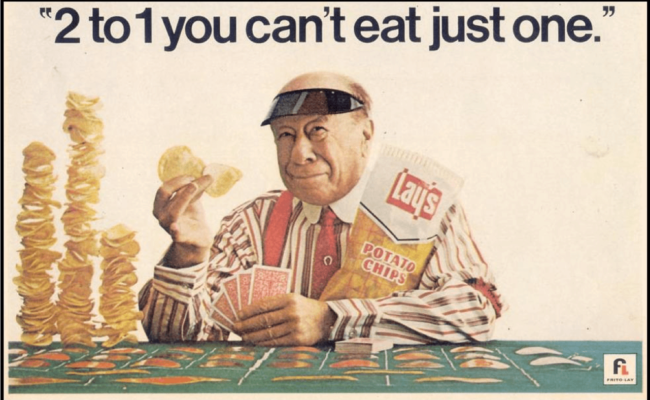
Remember the Lay’s commercial? Bet you can’t eat just one. They knew that was a sucker’s bet.
In the 60s there were 600-800 items in a grocery store and many of those were only available within certain seasons.
Today the typical grocery store stocks over 30,000 items. That’s sort of overwhelming just thinking about it.
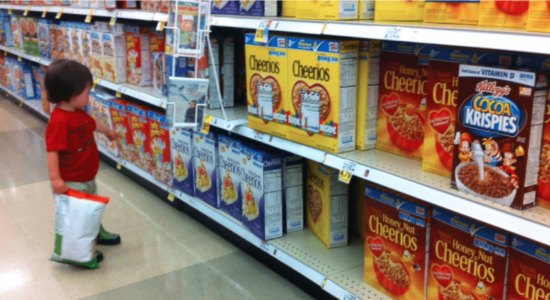
And every parent in here probably knows the joy of grocery shopping with a young kid and going down the cereal aisle.
It’s like some type of high stakes obstacle course where you have to crawl through the barbed wire.
But it’s not just the Fruit Loops and the Captn crunch that are sabotaging our kids with the wrong fuel.
When my wife and I decided to go Paleo, we grabbed a trash bag and just started throwing all of the crap away. Did you know that they even try to sneak sugar into chicken broth? Really.
But one of the things that surprised me was what I found on a box of Nature’s Path Pumpkin and Flax Granola. I had bought it convinced that it was some type of super food.
But since it was cereal it was headed to the trash. But out of curiosity as I was throwing it away I looked at the label for the nutritional profile.
37 grams of carbs in serving size of ¾ of a cup.
Here’s the thing – I don’t think I ever had a bowl of cereal that was only ¾ of a cup, but even in that miniature serving there are more carbs than in a full-size Snickers bar. The Snickers bar has 33 grams of carbs.
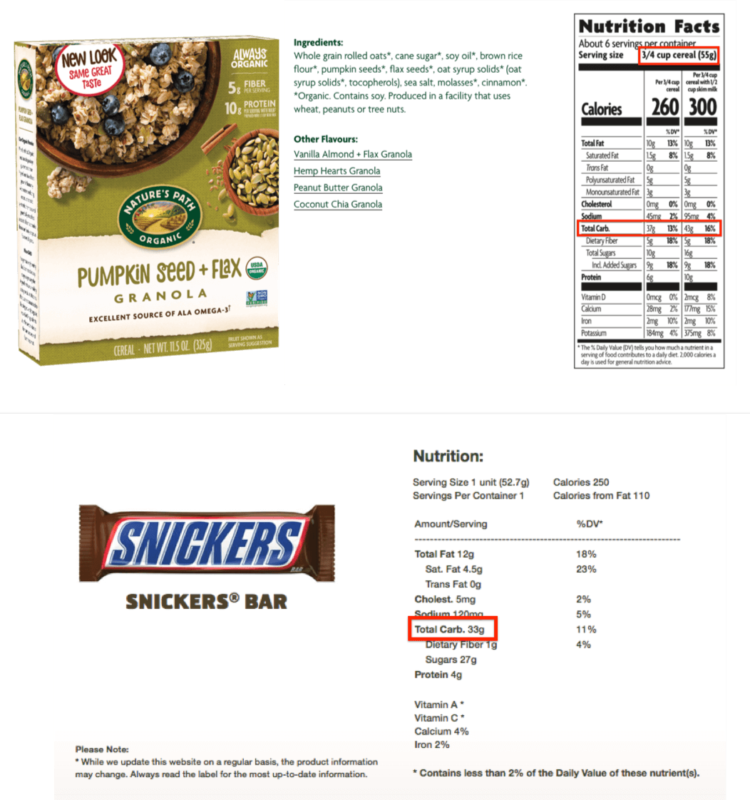
Not many people would feel great about giving their kid a Snickers Bar and a Coke for breakfast, but a big bowl of cereal and a glass of orange juice is pretty much the same thing.
Sure, the orange juice may have more vitamin C – but it is loaded with sugar. And 2 hours later you’re hungry again.
So, what happened when I stopped being the poster child for heart-healthy whole grains?
Well, I stopped eating them – all of them. Wheat, barley, couscous, brown rice, cereal, even oatmeal.
Now full disclosure – every Christmas my kids and I make homemade tamales with organic masa and maybe every couple of months I’ll have Mexican food with corn tortillas and chips and salsa. But day in and day out – we pass on grains.
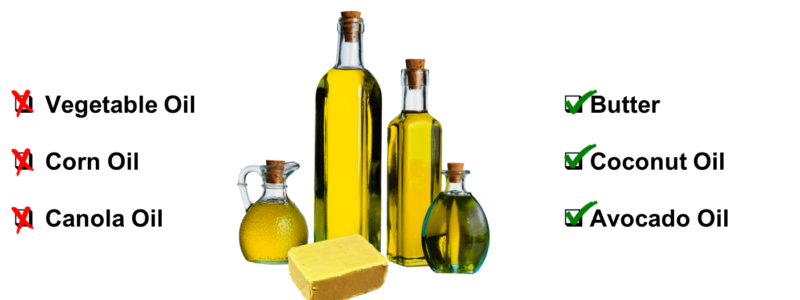
In addition to the grains, my wife and I got rid of all of the industrial seed oils – things like corn oil, canola, vegetable oil, grape seed oil, and stuff like smart balance butter.
This stuff is something called Polyunsaturated Fatty Acids or PUFA and the problem with them is that they’re damaged by the high heat of cooking and many of them are damaged during the manufacturing process. And these damaged lipids have a nasty way of finding their way into your cell walls and membranes. Not recommended.
Now we cook with lard from pastured pigs, bacon grease from uncured bacon, ghee, and for lower temp cooking I’ll use butter, olive oil or avocado oil.
The other thing we got rid of is sugar.
Anything with high fructose corn syrup or sugar went in the trash. I’ll still use honey every once in a while, or a natural sweetener called monk fruit, but after a while, my taste buds changed and my insane sweet tooth calmed down.
I’d been raised on ice cream, and I could destroy a half gallon of Blue Bell in just a couple of days, but Blue Bell just doesn’t do it for me anymore – it’s too sweet.
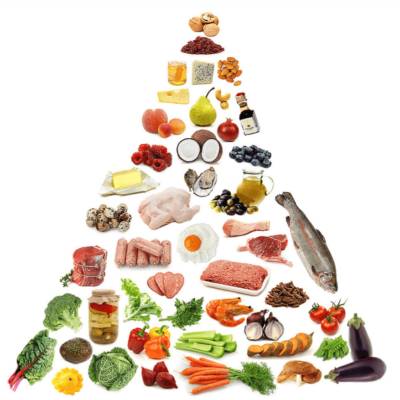
I laugh when I hear that Paleo / Primal or Keto diets aren’t sustainable.
Jude and I eat grass fed or pastured meat, wild caught seafood, lots of veggies, cheese from goat’s or sheep’s milk, full-fat yogurt, seeds, nuts, fruit, dark chocolate and lots of avocado and coconut.
And we’ll have a glass of wine or an occasional bourbon on the rocks or tequila or gin with lime and Topo Chico. So, I don’t feel like I’ve adopted some crazy restrictive diet or lifestyle.
In addition to loving the food we eat, I love what this way of eating has done for our health.
We’ve both lost a little over 20 pounds, and we’ve kept it off and our labs have improved so much that my doctor has stopped trying to get me on statins and we’ve got more energy and feel better than we’ve felt in years.
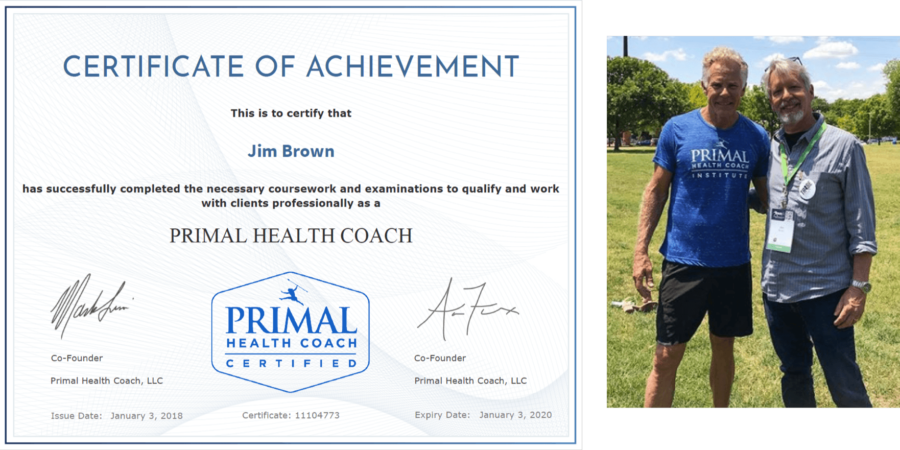
I recently completed my Primal Health Coaching certification training and, in the process, I found out that there were a few other health beliefs that I had that weren’t serving me well.
One of those was around exercise. I always believed that I could exercise my way to weight management. Do you know what I’m talking about? Eat too many nachos, no problem – extra cardio, too many beers, no problem, more cardio. When I said that I used to try to wear out the Stairmaster or the elliptical that was accurate. My cardio sessions were anywhere from 30 minutes to an hour and I wanted to make sure that I kept my heart rate as high as I could push it for as long as I could handle.
Here’s the problem with that. It doesn’t work. You can’t outrun or out sweat a lousy diet.

There’s this thing called a compensatory mechanism.
Do you ever notice that after you really burn it up in the gym that you’re hungrier than normal and that you have more of an urge to take it easy? It’s more of that hunter-gatherer stuff.
Paleo us was never sure where our next meal was coming from and we had to save our energy in case we had to sprint away to keep from becoming some other predator’s dinner or to be able to put on a burst of speed to catch our dinner before it could get away, so we’re wired to conserve energy and take it easy or to put the hammer down and sprint if it’s critical.
Easy cardio or sprints – those are our sweet spots.
We get in trouble if we spend too much time in that no-mans’ land in the middle. Prolonged elevated cardio increases our stress hormones and complicates recovery. And our built-in energy regulation tells our body- refuel and rest- we better be ready to hit it hard again tomorrow.
What I learned and appreciated was that you don’t need to spend hours in the gym to be in good shape. Walking is now my preferred form of cardio, I get to the gym once or twice a week but my sessions are 30 minutes max.
If I can’t get to the gym, I’ll throw in a 7-minute-high intensity interval at home that uses body weight or a few minutes work with a kettlebell.
I’m using exercise and weights to stay healthy but my weight management is done with how I eat and walking.
And every 7-10 days I’ll throw in a sprint session. It may be on the elliptical or the rower – I’ll warm up for 10 minutes and then I’ll go 20-30 seconds as hard as I can go and then easy for 30 seconds and then hammer it for 20-30 seconds. I’ll do that 6 times and then I’ll cool down for 5- 10 minutes. That’s my sprint session.
I began to realize that some folks are incredibly fit, but they aren’t necessarily healthy.
Mark Sisson, one of the early folks in the Paleo / Primal community was an elite marathoner and later a professional triathlete. He talks about how many of his peers from his competitive racing days have died from heart disease or have developed heart problems because of the damage they did to their bodies from overtraining and inadequate recovery.
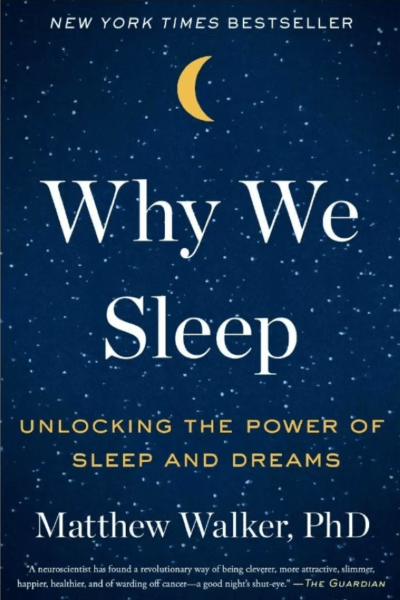
Finally, let’s take a look at recovery.
A great place to start is sleep.
For a long time, I didn’t pay attention to this. I went years getting anywhere from 4 to 6 hours of sleep a night because I was convinced that I was too busy to sleep. Anybody here in that camp?
Here’s the thing. Your body depends on the recovery and repair that happens when you sleep. And for those people that say that they’ll sleep when they’re dead – guess what – they may not have to wait very long.
I was lucky I got the heart scan before my body completely went out on strike. But I’m absolutely convinced that my lousy diet and my chronic sleep deficit were key factors in my heart disease. Sleep is a non-negotiable.
From an evolutionary standpoint, it wasn’t smart to be out wandering around in the dark. There were plenty of predators out there that were a lot meaner, had bigger teeth and better night vision than we did.
Plus, just falling or getting hurt in the dark could lead to a life-ending infection. We’re hard-wired to sleep.
1. It helps with memory and skill consolidation.
2. Lack of sleep messes with the hormones that tell us that we’re hungry and when we’re full.
3. Sleep deprived folks fall asleep at some real inconvenient times- like driving a car, operating heavy equipment, performing your surgery, or making sure that your airplane stays in its lane.
4. Lack of sleep makes you irritable, impatience, unable to concentrate, and moody. In other words, it’s not how to win friends or influence people.
5. Serious sleep disorders can lead to high blood pressure, increased stress hormone levels, and irregular heartbeat.
6. Sleep deprivation tanks your immune function, and this can make you more susceptible to colds and flu but also to a lot more serious things like cancer.
7. There’s growing evidence that sleep deprivation significantly increases your risk of Alzheimer’s.
There’s just too much evidence that a lack of sleep hampers performance and recovery. Do yourself a favor and prioritize sleep.
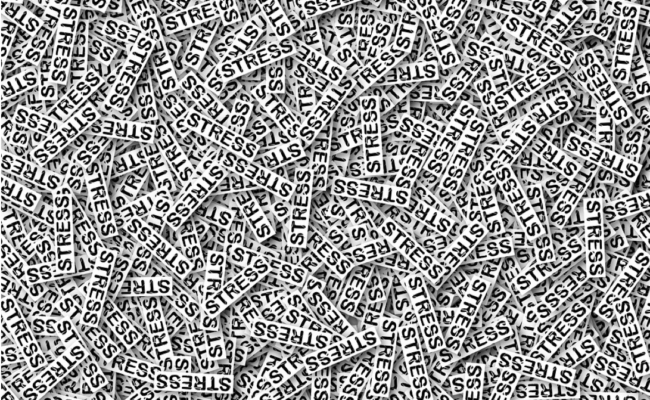
And finally, let’s look at stress management.
During ancient times if something scary was chasing you and trying to eat you, your body’s fire alarm went off and said – haul ass.
Your adrenaline level would spike and your stress hormones would elevate and you were able to run faster than normal. And hopefully, you didn’t become a bear’s dinner.
But once the threat was over your breathing and your heart rate returned to normal.
Hopefully today you don’t get chased by a lot of bears, but unfortunately, today’s danger isn’t acute stress like a bear, but chronic stress like financial uncertainty, illness of a loved one, or worrying about how you’re going to meet a deadline.
Here’s the thing – chronic stress still elevates those same stress hormones, but with chronic stress, those levels don’t just naturally return to normal.
It’s critical that we learn how to turn off the noise.
It’s one of the reasons that I’m a big fan of going for a walk – even if it’s just for 15 or 20 minutes.
Meditation or a mindfulness practice is another great tool for learning how to pay less attention to our monkey brain.
Another way to help unwind is to reintroduce ourselves to the concept of play: doing something that you enjoy without being attached to the outcome.
It might be playing catch with your kid, hitting golf balls just for fun or maybe yours is water or snow skiing. Or maybe it’s learning how to paint or play a musical instrument, but whatever it is, try approaching it with a sense of curiosity and playfulness.
I hope some of this has been helpful. You don’t need to sell your furniture and move into a cave, but by better understanding how your operating system evolved, you can make food, movement and recovery choices that support your health instead of tanking it. In other words, you can build A Balanced You.
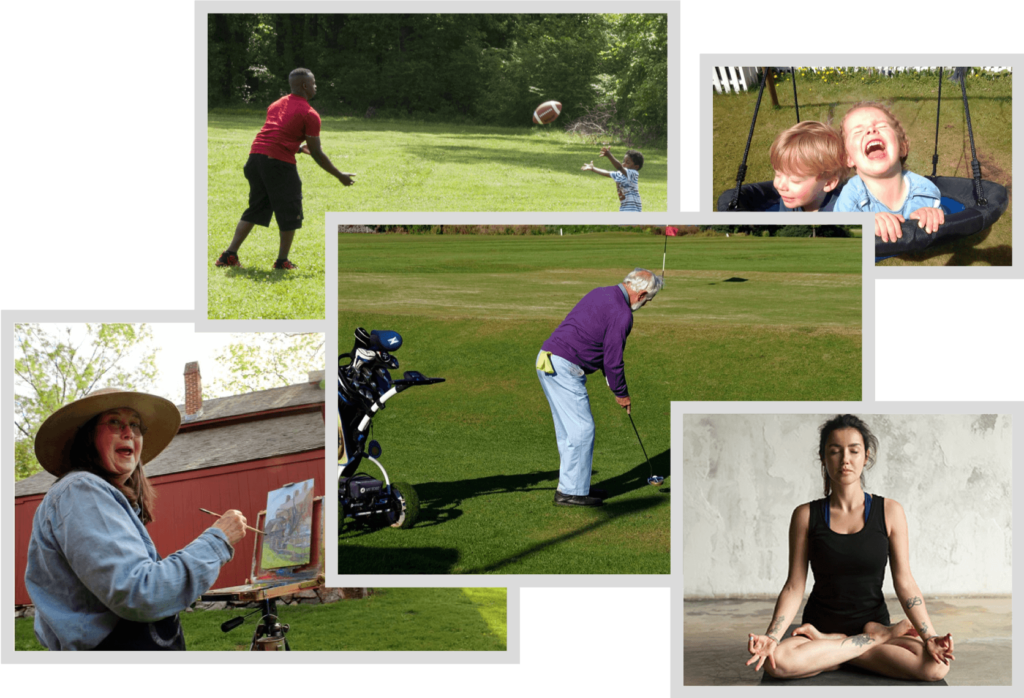
I started A Balanced You to help people navigate this process. I’d love to help you take the hassle out of getting healthy.
If you’re ready to take control of your health because you’re sick and tired of feeling sick and tired or maybe you’re ready to add some clothes to your wardrobe that don’t feature elastic or a drawstring – schedule a 15-minute call and let’s see if I can help you achieve your goals.
